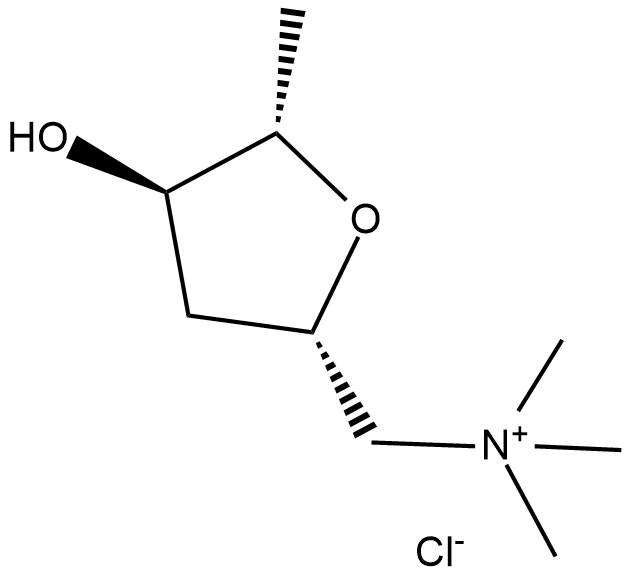(+)-Muscarine (chloride) (Synonyms: (+)-Muscarine chloride) |
| Catalog No.GC18746 |
(+)-Muscarine is an agonist of muscarinic acetylcholine receptors that was originally found in A.
Products are for research use only. Not for human use. We do not sell to patients.

Cas No.: 2303-35-7
Sample solution is provided at 25 µL, 10mM.
(+)-Muscarine is an agonist of muscarinic acetylcholine receptors that was originally found in A. muscaria.[1] It induces spasms in isolated intestinal ileum from mouse, guinea pig, rabbit, dog, monkey, and horse, contraction of longitudinal uterine and bladder muscle strips from mouse, guinea pig, rabbit, rat, horse, and dog, and slows the heart rate of isolated guinea pig and rabbit atria. In vivo, (+)-muscarine induces bronchoconstriction in guinea pigs and rabbits as well as respiratory depression in rabbits and cats with minimum active doses (MADs) ranging from 1 to 5 μg/kg. It reduces blood pressure in cats, dogs, and rabbits and induces uterine, bladder, and intestinal contraction in cats and dogs. (+)-Muscarine (0.005-0.01 mg/kg) increases circling and pacing behaviors and induces fear aggression in cats.[2] It has antinociceptive activity in rats in the hot plate and tail-flick tests. [3] (+)-Muscarine also inhibits acetylcholinesterase (Ki = 220 μM).[4]
Reference:
[1]. Fraser, P.J. Pharmacological actions of pure muscarine chloride Br. J. Pharmacol. Chemother. 12(1), 47-52 (1957).
[2]. Beleslin, D.B., and Samardzić, R. Muscarine- and carbachol-induced aggressions: Fear and irritable kinds of aggressions Pyschopharmacology (Berl.) 55(3), 233-236 (1977).
[3]. Iwamoto, E.T., and Marion, L. Characterization of the antinociception produced by intrathecally administered muscarinic agonists in rats J. Pharmacol. Exp. Ther. 266(1), 329-338 (1993).
[4]. Witkop, B., Durant, R.C., and Friess, S.L. Acetylcholinesterase inhibitory activities of muscarine and muscarone derivatives Experientia 15(8), 300-301 (1959).
Average Rating: 5 (Based on Reviews and 32 reference(s) in Google Scholar.)
GLPBIO products are for RESEARCH USE ONLY. Please make sure your review or question is research based.
Required fields are marked with *




